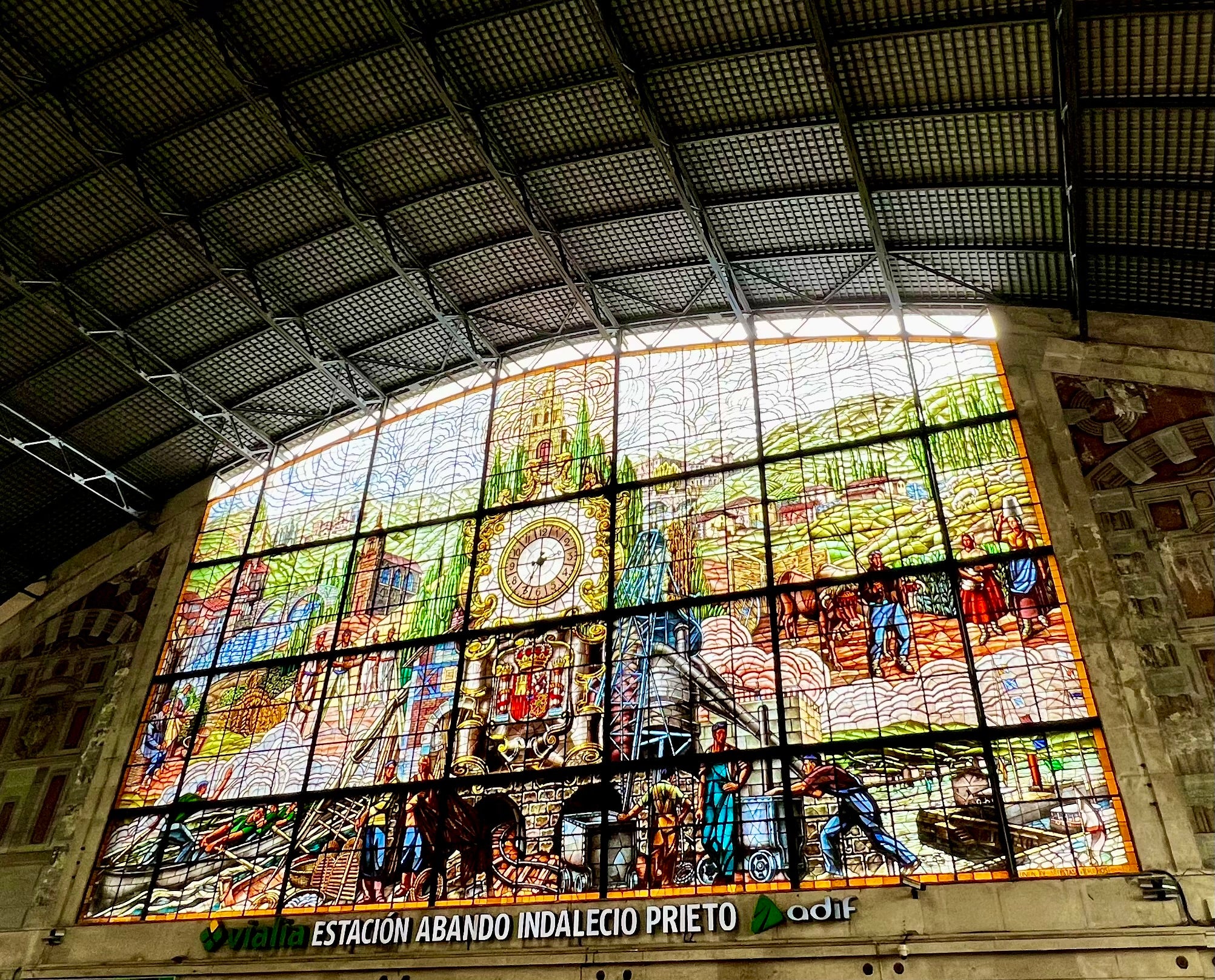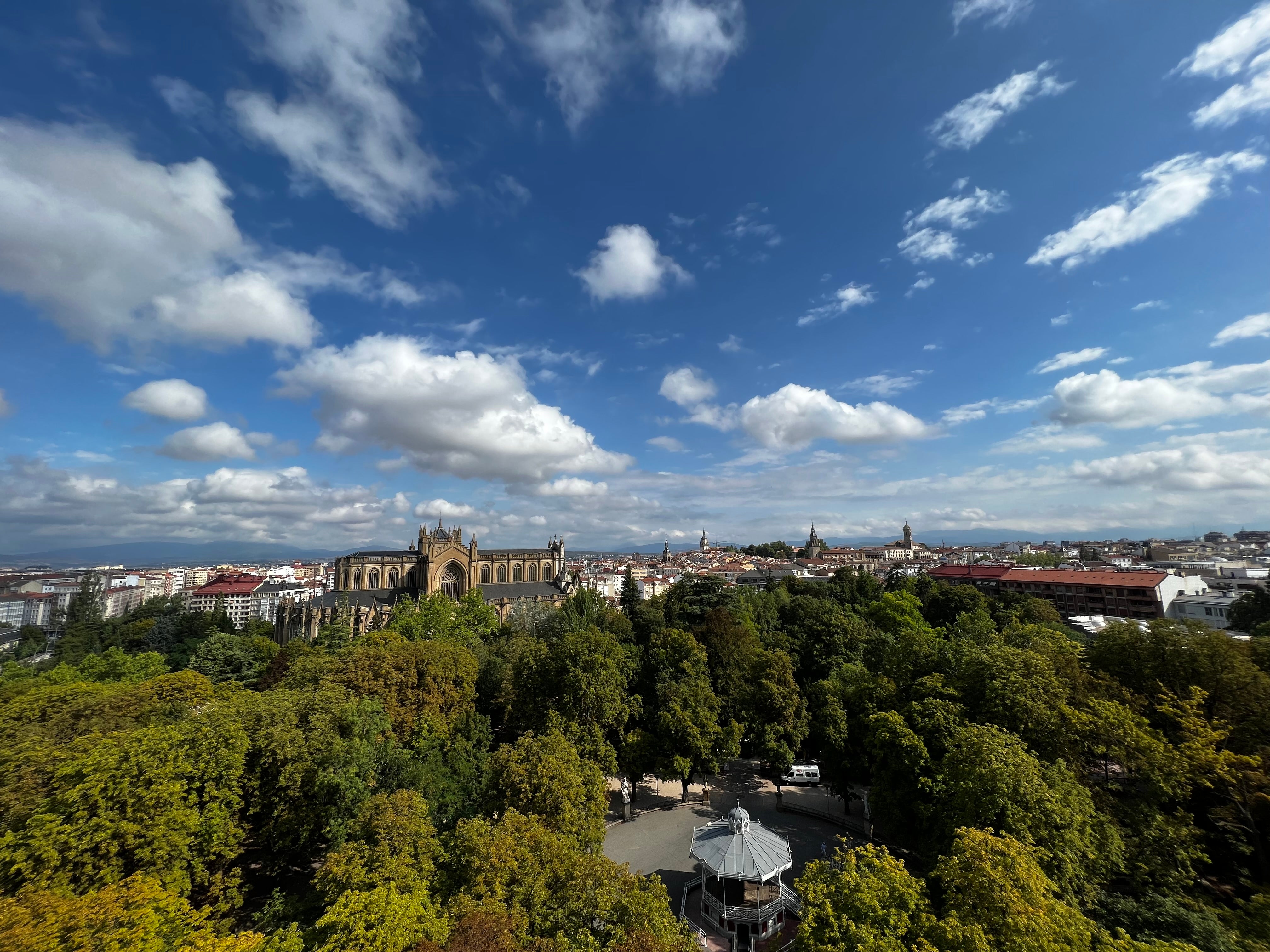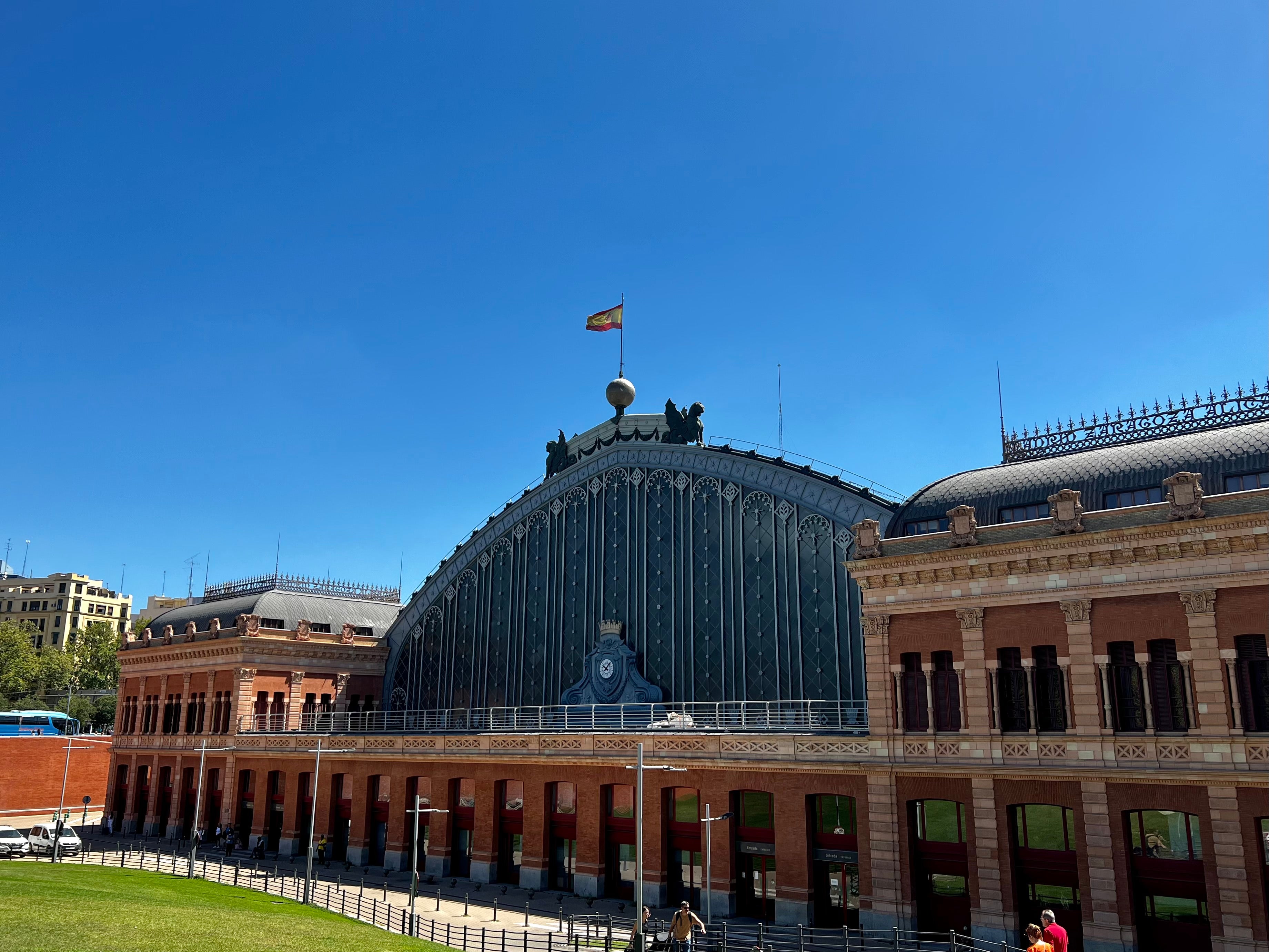
In July, the Spanish government declared many of its trains would be free from 1 September to 31 December – an initiative focused on alleviating financial pressures on commuters.
Taking advantage of the offer as a tourist was a non-starter due to having to select a regular route and repeating it much like, well, a commuter. Another aspect of the scheme, however, is 50 per cent off a “BonoAve Flexible” pass on high-speed Ave trains – taking it from €735 to €367.50 (£321) – which includes 10 journeys plus free returns on various cities’ metropolitan Cercanias networks (normally about €10 a pop depending on the length of journey).
To test whether visitors could turn this to our advantage, I decided to travel 572 miles down the spine of Spain – from Bilbao to Malaga – using my complimentary access to the metro systems to see the quieter corners of each metropolis.
Bilbao-Vitoria-Gasteiz-Valladolid
Grey skies loomed over Bilbao on the last day of August, producing a light but consistent drizzle – a rain locals refer to as chirimiri. From my terrace in the ultra-polished NYX hotel, I could see the large, curved roof of Abando station, glistening invitingly in the low light. My first train ticket was booked, on the easy to use Renfe app, but the free Cercanias aspect would not be activated until my next stop via the QR code on my ticket. The app also told me how much CO2 I’d saved by choosing train over plane; for example, the longest journey – from Madrid to Cordoba – produced 9.7kg of CO2 per traveller, as opposed to 137kg for the equivalent flight. Not bad.

The following morning, I visited the Frank Gehry-designed Guggenheim Museum Bilbao, with its exhibitions of contemporary and modern art, and explored the colourful, street art-clad alleyways of the old town, before walking to the station to find that more creativity awaited: a giant, stained-glass arch on the main concourse, depicting the trades of Basque country. QR code scanned, I boarded the train; a free rail initiative instructional video played on the screens.
Changing at Miranda De Ebro, a 90-minute train ride south, I double-checked that the short onward journey to Vitoria-Gasteiz, the seat of Basque government, was included in my ticket. The assistant told me that, although the likes of Bilbao, Malaga and Madrid possessed Cercanias, they didn’t have the same system here – I’d have to pay. Telling him the reason for my trip, he replied that they were still trying to make sense of the new rules themselves. (Speaking of rules: masks are still required on Spanish public transport, and most major stations have bag scanners.)
Valladolid always buzzes at weekends – it’s a Madrilenian favourite for a short break, though not as well known internationally
Once checked into my Vitoria-Gasteiz digs for the night, the NH Canciller hotel (an eight-minute walk from the station), I took in the sweeping views of La Florida park and the town square beyond. But I didn’t linger long, heading straight to Artium, a museum of Basque contemporary art featuring works such as A Piece of Crystallised Sky – a huge cluster of light bulbs that clang together in the breeze. A whistle-stop tour? Sure, but the train waits for no one.
Up next, a journey of about two hours and 45 minutes southwest, changing again at Miranda De Ebro, to reach the lively city of Valladolid. It was the night of their patron saint’s day, heightening the fiesta atmosphere, but my guide Sergio assured me that Valladolid always buzzes at weekends – it’s a Madrilenian favourite for a short break, though not as well known internationally. After sampling some tapas at Los Zagales, where dishes were more akin to a tasting menu at a fine dining restaurant, I decided this needs to change – and the beautiful part is, it’s somewhere I would only ever have happened upon by rail.
Toledo-Madrid
I was pressing south into a more Mediterranean climate with the next leg of my journey but, as I trundled my way down to Toledo via Madrid (around 2hr 20m), my carriage view resembled the browned British countryside of midsummer – only with donkeys instead of cows. Cutting through cliffs under blue skies, the murky weather of Bilbao was a distant memory.
Toledo wasn’t covered by the pass but, for €20 return, it would have been rude not to swing by. Google told me it was only a 30-minute walk to my hotel, so I forwent the taxi. Some time later, having dragged my bag up slopes and narrow cobbled streets, I finally arrived at the Eugina de Montijo, where staff politely ignored my sweat-drenched brow and saw to it that I was fed, watered and massaged.

Toledo had the curious feel of a city just for tourists, where the locals live outside the beautiful Roman walls and drift over the Baroque bridge to work every day. It’s not without charm: ancient buildings catch the light for striking vistas; there are plentiful tabernas; the local speciality is a marzipan pastry, still made by nuns.
Having only passed through Madrid on my previous train ride, it was time to return for a proper explore. The Spanish capital is a locals’ city, gritty and beautiful, with multiple personalities depending on when and where you go. Currently in a hipster phase, it has hole-in-the-wall bars and a garage rock scene to match. Locals recommended that the best use of my Cercanias pass would be a day trip from Madrid Atocha station to Guadalajara, one hour away on the C2 rail service. The town felt like stepping back in time – sitting pretty on the River Henares, dominated by Concatedral Santa María and the Palace del Infantado, now the Museum of Guadalajara.
Cordoba-Malaga
Onwards and downwards, my next 1hr 45m leg took me from Madrid to Cordoba, a city in Andalusia that has perfected the art of melding tourist hub with local charm. On top of main draws such as its mosque – a building that succinctly tells the Andalusian story of religious invasion – and medieval castle Alcazar de los Reyes Cristianos, there are trendy haunts such as Jugo Vinos Vivos, a natural wine bar with bohemian vibes, and El Rincon De Carmen, a courtyard restaurant hidden behind curtains of ivy.

The final hour-long train journey took me to my most southerly stop, Malaga. Once an overlooked airport city, it’s got its groove back, with 42 museums – including one dedicated to the work of Malaga native Picasso – and a flourishing cultural scene that includes a theatre run by fellow Malegueno, Antonio Banderas, in the reborn Soho district.
Despite researching Spain’s new rail scheme before I went, it felt as if I was learning as I went along
Capitalising on the free Cercanias return one last time, I hopped on the C1 service to Benalmadena, 50 minutes away. I could see why it’s a local favourite – evading the questionable developments of neighbouring coastal towns, it’s retained a charming marina and pristine beach. My final afternoon was spent wandering Malaga’s old town, trying the sweet wine at Antigua Casa del Guardia, and skipping the queue, having booked ahead, at El Pimpi tapas bar.
Despite researching Spain’s new rail scheme before I went, it felt as if I were learning as I went along: the difference between “Media Distancia” and Cercanias; which cities possessed metro systems that my pass was eligible for; that Madrid has more than one major terminus (maybe that was just me); how I could have used my pass to better effect with a few extra days. But, despite it all, I was able to experience a Spain rarely discovered by air travellers – one of parochial towns, endless farmland, regional getaways and hidden beaches, all on comfortable, air-conditioned trains. All in all, it felt like a great deal to me.
Travel essentials
Getting there
Trying to fly less?
Brittany Ferries operates regular services from Portsmouth and Plymouth to Bilbao.
Fine with flying?
Vueling, Iberia and British Airways fly direct from the UK to Bilbao.
Staying there
- Doubles at NYX Bilbao from €129, room only.
- Doubles at NH Canciller Ayala Vitoria-Gasteiz from €115, B&B.
- Doubles at NH Valladolid Balago from €87.70, B&B.
- Doubles at Euginia De Montijo, Toledo, from £80, room only.
- Doubles at Hard Rock Hotel Madrid from €180, room only.
- Doubles at Eurostars Cordoba from €110, B&B.
- Doubles at Barcelo Malaga from £85, room only.
More information
Go to renfe.com to find out more.







